Key Takeaways
Your hosting "secret sauce" needs to be a blend of must-have amenities and unexpected touches that leave guests clicking that five-star review button.
Turn your property into a worry-free zone with smart tech and safety features that protect both your peace of mind and your guests' experience.
Set up systems that keep your essentials in check without becoming a full-time inventory manager.
Ever walked into a hotel room to find no towels or a coffee maker with no filters? That sinking feeling is exactly what you're trying to avoid as a host. The right Airbnb essentials are the difference between "never again" and "can't wait to come back." When something basic goes missing, your occupancy rate and reviews take the hit.
Whether you're hosting your first guest or scaling to multiple properties , consistency is your best friend. Guests develop a sixth sense for details—they notice when the sheets feel premium, when the Wi-Fi actually delivers the speed you promised, and when the kitchen has everything needed for that midnight snack or full holiday meal. These essentials are functional necessities and they signal that you've thought of everything.
Think of your Airbnb essentials as your silent host—they welcome guests, answer questions before they're asked, and solve problems without you lifting a finger. This preparation contributes to a business that runs smoothly even when you're not around.
Bedroom Must-Haves
No one books a rental hoping for a stiff mattress and scratchy sheets. If anything, guests want to experience a bed that is comfier than their own while they're on vacation. The bedroom sets the tone for how guests rest, recharge, and rate the entire stay. Every detail—from the bed frame to the lighting—needs to support comfort and ease.
Start with a mattress built for frequent use. A mid-firm memory foam or hybrid between 10 to 14 inches thick holds up well over time and offers enough support for most guests. Pair it with a bed frame that doesn’t wobble or squeak. If you manage more than one property, choosing the same setup across all bedrooms makes replacements and inventory tracking easier.
Quality bedding
Bedding consistently shows up in reviews, and not always in a good way. Guests notice when sheets feel stiff or synthetic. Stick with cotton or cotton blends that hold up to repeated washes. Avoid high-gloss or slippery fabrics that wrinkle easily or feel too warm.
Extra pillows and blankets: Offer more than the guest count. Some guests need two pillows, others sleep cold. Having options shows you thought ahead.
Protective layers: Use waterproof, hypoallergenic mattress and pillow covers. They extend the life of your setup and keep things clean between turnovers.
Soft lighting
Overhead lights don’t create a relaxing space. Bedrooms feel more comfortable with layered lighting guests can control.
Warm-toned bulbs: Use 2700K to 3000K bulbs for a soft, cozy glow. Cooler lights feel cold and uninviting.
Bedside lamps or dimmers: Make it easy for guests to wind down without getting out of bed. If space is tight, wall-mounted sconces or nightstands with built-in lamps and USB ports work well.
Storage and convenience
Living out of a suitcase gets old fast, even for weekend trips. When there’s nowhere to unpack, the room feels cluttered and temporary.
Add a dresser or wardrobe when space allows. If not, a luggage rack keeps bags off the floor. Hooks on the wall or over-the-door racks give guests a place to hang jackets or towels. Don’t skip the mirror. A full-length mirror helps guests get ready without waiting for the bathroom.
A well-set bedroom shapes the stay. Comfortable basics, thoughtful extras, and practical layouts go further than trendy furniture ever will. For many guests, the bedroom is where Airbnb essentials either shine or fall flat.
Save yourself from your inbox
Automate with Uplisting
Automated guest messages keep your guest informed from booking through to check-out. They’re designed to answer questions before they arise, saving you time whilst keeping your guests happy.
Bathroom Basics
No one expects a luxury spa, but guests absolutely expect a clean, fully stocked bathroom that works without surprises. A burned-out lightbulb, missing hand soap, or low water pressure? Any of those can knock a review down a star.
Start with the basics guests rely on: bath towels, toilet paper, and at least one set of toiletries per person. Each guest should have their own towel. Add a hand towel and bath mat for comfort and hygiene. Always stock enough toilet paper for the full stay and keep extra rolls visible—no one wants to rummage through cabinets when it matters most.
Hygiene essentials
Today's travelers notice the details. Used shampoo bottles or refill containers with gunky lids send the wrong message. Go with either sealed, single-use toiletries or refillable dispensers that are cleaned and refilled between stays. Place them where guests can easily reach them. No one wants to hunt for body wash mid-shower.
Towels : Medium-weight white towels work best. They're easy to bleach, quick to spot clean, and simple to replace.
Extras : Keep spare towels and toiletries in plain sight. Guests shouldn't have to ask or guess where they are.
Forgotten items : Stock a small basket with travel-sized toothpaste, extra toothbrushes, and other commonly forgotten essentials. These small touches save guests from late-night store runs and often earn specific mentions in five-star reviews.
Safety gear
Showers and tile floors aren’t a great mix without a slip-resistant mat. A sturdy one with good grip helps prevent accidents and gives guests peace of mind, especially for families or older travelers. Replace mats regularly to avoid mildew and wear.
Good airflow matters, too. A working fan, dehumidifier, or a window that opens helps control moisture and keeps everything smelling fresh. No one wants to deal with steam-drenched mirrors or a musty smell.
Reliable hot water also makes a difference. A cold shower—especially when unexpected—can turn a five-star stay into a complaint. Test water temperature and pressure regularly to make sure everything works as it should.
Finally, place a basic first-aid kit in a labeled drawer or cabinet. Include bandages, antiseptic wipes, and antibiotic cream. It doesn’t need to be fancy—just clean, stocked, and easy to find.
Kitchen and Dining Staples
Guests often pick a short-term rental because they plan to cook. This is especially true for families and larger groups. When they do, they expect a kitchen setup that doesn’t make meal prep feel like a puzzle. A few smart choices here can turn a good stay into a great one.
Start with the basics. Stock enough plates, glasses, and utensils for every guest, plus a few extras to cover breakage or back-to-back meals. A six-person booking shouldn’t mean someone eats cereal with a serving spoon. Add sharp knives, a corkscrew, and serving tools that don’t feel like leftovers from a college apartment.
For cookware, stick to pieces that hold up over time. A medium nonstick frying pan, a large pot, and a sheet tray cover nearly every cooking need. Include a cutting board, peeler, can opener, and a few mixing bowls. A coffee maker—drip, pod, or French press—makes mornings smoother.
Appliances
Appliances don’t need to impress, they just need to work every time. A microwave matters more than you might think, especially for short stays and families. A toaster makes breakfast simple, and an electric kettle helps international travelers feel at home.
Microwave: A must-have for quick meals and late-night snacks.
Dishwasher: Worth adding in properties with higher turnover or longer stays.
Fridge: Go full-size when possible. Mini fridges only work for tiny studios or one-night stays.
Avoid outdated models with missing buttons or confusing manuals. Guests shouldn’t need to guess how to heat food or make coffee. Include instructions on how to use appliances in your house manual.
Guest-friendly touches
A few small details make the kitchen feel more welcoming. Labels on cabinets and drawers help guests find what they need fast so they don't have to open every door just to locate a wine opener. If the coffee maker or oven has quirks, leave simple instructions nearby.
Include basics like salt, pepper, sugar, and cooking oil. Single-serve snacks or bottled water feel thoughtful, especially when guests arrive hungry. Skip half-used condiments and anything with a questionable expiration date.
Stock the space with everything needed to clean up without hassle: dish soap, a scrubber, paper towels, a trash can with liners, and a drying rack or mat. Keep spares where guests can easily spot them.
A dependable kitchen setup shows you’ve thought through how people actually use the space. That attention to detail doesn’t just check a box on an Airbnb essentials list—it helps guests feel at home.
So automatic, you won’t know what to do with yourself
Put my rentals on autopilot
It’s simple to automate repetitive tasks with Uplisting's short-term rental software. You’ll save hours every week and eliminate human error. Go ahead — take some time off.
Living Area Essentials
Guests often head straight to the living room after dropping their bags. This is where they settle in, scan the space, and decide if the property feels like somewhere they can relax. If the layout feels awkward or the furniture looks like an afterthought, everything else has to work harder to impress. Comfort and flow matter more here than flashy design or trendy pieces.
Start with seating that feels good to sit in, not just good in photos. A cushioned sofa or sectional that fits the group size is a must. Add a couple of accent chairs or poufs that guests can move around for conversation or movie nights. Include throw blankets and pillows that match the space and hold up well in the wash. Go for pieces that look intentional, not like leftovers from storage.
Furniture placement should leave clear walking paths and make it easy to access outlets for charging devices or setting up a laptop. Every seat should be within reach of a coffee or side table—no one wants to hold a drink the entire time. A balanced layout helps the space feel calm and easy to use.
Tech offerings
Fast, reliable Wi-Fi is one of the first things guests check when they arrive. Whether they’re working remotely or streaming after dinner, internet speed matters. The FCC defines basic broadband as 25 Mbps down and 3 Mbps up, but most guests expect at least double that. In competitive markets, slow internet can be a deal-breaker.
Smart TVs or streaming devices—like a Roku, Fire Stick, or Apple TV—make it easy for guests to watch what they want. Clunky remotes or complicated settings to find HDMI cause headaches. Keep instructions simple and visible, and include a tip on how to log out of personal accounts after checkout.
Cozy atmosphere
Every detail in the living room shapes how guests feel in the space. Lighting, textures, and furniture work together to create a place enjoyable to spend time in, not just functional.
Throw pillows: Two to four on a sofa usually does the trick. Stick with colors and fabrics that tie the room together without clashing.
Clear surfaces: Coffee tables and side tables should have room for guests to set down drinks, books, or laptops. One or two decorative pieces are plenty.
Add a small bookshelf or console with a few curated books, games, or local magazines. A printed map, handwritten food recommendations, or a framed QR code linking to a custom guide helps guests feel welcome and oriented. None of it needs to be elaborate, it just needs to show that you’ve thought about what guests actually use.
When guests can stretch out, scroll, stream, or share a meal without fuss, they remember the stay for the right reasons.

Modern Amenities
Guests expect more than fresh linens and a working coffee maker. They want smooth, stress-free stays from arrival to check-out. Adding the right conveniences can cut down on repetitive tasks for you as a host while making each stay more comfortable for guests. The key is choosing upgrades that actually solve problems without creating extra overhead.
Touchless solutions
Self check-in is now standard. Guests don’t want to schedule arrival times or wait around for someone to hand over a key. Smart locks or keypad entry let guests arrive when they’re ready and skip the hassle. No keys to lose. No late-night panicked texts.
Pair entry tech with scheduled messages that go out before arrival. Include clear directions, access codes, and parking details. The result? Guests feel prepared and confident and you spend less time answering repeat questions.
Remote-work accommodations
More guests are working while traveling, especially during midweek bookings. A dedicated workspace with a proper chair and desk makes working remotely feel less like a compromise. A sturdy table and comfortable seating is the bare minimum to help guests settle in and focus.
Add a surge protector with USB ports and place it where guests don’t have to hunt for it. For smaller spaces, a wall-mounted desk or quiet corner with decent lighting works just as well. A white noise machine or blackout curtains help create a more focused setup for video calls or deep work.
Climate control and comfort
Guests remember how a space feels. If the bedroom is too hot or too cold, it shows up in reviews. Central air isn’t always an option, but fans and space heaters with clear instructions can help manage comfort.
Ceiling fans, window units, and smart thermostats give guests more control. Make sure everything works and is simple to use. In places with big temperature swings, list what’s provided so guests know what to expect year-round.
Sustainable features
More travelers want to reduce their impact while away from home. LED bulbs cut energy use and last longer, which also means fewer replacements for you. A recycling bin under the sink or next to the trash can encourages guests to sort waste without needing extra reminders.
Reusable water bottles and refillable soap dispensers show care without adding much to your routine. Compost bins make sense in areas where pickup is available. Keep bins clean and labeled to avoid confusion. Small changes like these help your space stand out while keeping daily operations simple.
Enjoy the confidence & focus you need to scale your vacation rental business
Book more while doing less
With a reliable VRM solution you can trust, Uplisting can help you grow your business without wasting time on double bookings, unhappy guests, upset clients and worrying what could go wrong next.
Safety Must-Haves
Guests can't relax unless they feel safe. Safety builds trust, shows professionalism, and protects your property from unnecessary risk.
Start with the non-negotiables. Put smoke detectors in every bedroom and the main living space. Carbon monoxide detectors are a must for any gas-powered appliances or heating systems. Set a routine to test alarms and swap out batteries. Keep a record of your safety checks. A chirping detector at 2 a.m. can tank a five-star review faster than you think.
Install a fire extinguisher near the kitchen, but not so close that guests would need to walk through flames to reach it. Affix a label or post a sign nearby so it’s easy to spot in an emergency. Post emergency exit instructions near the front door and include them in the guest guide—especially for multi-story layouts or apartments with more complex floor plans.
Good lighting outside helps guests feel secure when they arrive after dark. Motion-activated lights near entryways, paths, and parking spots create a safe and welcoming first impression. For off-grid or rural properties, solar-powered options are easy to add and maintain.
Security essentials
Smart safety upgrades don’t need to be expensive. Motion-sensor lighting is budget-friendly and improves visibility without wasting electricity. Guests arriving late appreciate the extra care, and you get fewer texts asking how to find the front door.
Check every door and window lock regularly. A loose latch or slow-deadbolt undermines everything else you’ve done. For smart locks, test every code between stays and run firmware updates monthly. When a lock fails, guests feel stuck—and they’ll mention it in their reviews.
Don’t set and forget smoke and carbon monoxide detectors. Build battery checks into your cleaning or inspection schedule. Devices that work perfectly during one stay can easily fail the next if no one’s paying attention.
Local regulations
Short-term rental rules can vary block by block. Some homeowner associations (HOAs) limit what kind of signage or safety gear is allowed. Others require specific exit maps or occupancy notices. If you manage a unit in a shared building, check for any rules tied to emergency lighting, window bars, or annual inspections.
Post emergency contact numbers where guests can find them fast. Include police, fire, poison control, and your own contact details. Add the full property address to the guest guide so they can read it off clearly if they need to call for help.
Budget-Friendly Upgrades
A standout rental doesn’t need a huge budget. Many of the most effective upgrades come from practical decisions and a clear focus. When you manage multiple short-term rentals, keeping costs down without cutting corners makes a real difference.
High-impact items
Spend where it counts. A supportive mattress directly affects sleep quality and guest reviews. Choose memory foam or hybrid models that stay comfortable after dozens of stays. Avoid ultra-budget options that flatten quickly and lead to complaints.
Go for furniture that holds up. A sturdy dining table with matching chairs or a well-made sofa keeps the layout functional and avoids last-minute replacements. Skip delicate pieces that photograph well but wear out fast. Look for finishes that don’t chip easily and materials that resist stains or scratches.
Stick to neutral colors like gray, beige, or deep navy. These shades blend into most design schemes and make it easier to rotate textiles or seasonal accents. With a few simple swaps, the space stays updated without a full redesign.
Tips to save
Stretching your budget means knowing where to shop and what to look for. Clearance sections at local furniture stores often have last-season sets that cost far less. Coordinated bundles—like a full bedroom or living room set—can simplify the shopping process, especially if you're furnishing several properties on a timeline.
Secondhand doesn’t mean second-best. Estate sales, online marketplaces, and resale apps offer solid wood furniture, durable sofas, and unique accents at prices that beat retail. Focus on pieces with clean lines and minor wear. A scratched dresser or worn coffee table might only need sanding and a coat of paint.
Simple DIY projects also go a long way. Frame local photography, repaint furniture, or use peel-and-stick wallpaper to create a feature wall. Small touches like these make a property feel cared for and unique without draining resources. Tailor updates to each property—metal accents work well in city apartments, while natural textures feel right in mountain cabins or beach homes.
For quick visual upgrades, focus on lighting and soft finishes. Replace dated fixtures with something more modern and add warm-toned bulbs. Hang curtains high and wide to make rooms feel bigger. A well-sized rug under the sofa or bed helps anchor the space, while large wall prints add style without taking up square footage.
Budget-friendly doesn’t mean bare-bones. With a few smart moves, a rental can feel elevated and welcoming, even when the budget stays tight.
All-in-one Vacation Rental Software and Channel Management System
Get started in seconds by connecting Airbnb
Manage short-term rentals & bookings, message guests, take payment, and so much more. All in one easy-to-use platform (that never double-books).
Cleanliness and Maintenance
Don't make guests feel like they're rolling the dice on cleanliness when they book your space. Any missed detail—dust on a fan blade, leftover hair in the shower—can instantly shift the tone of a review.
Create a cleaning checklist customized for each property. Every turnover should follow the same order:
Disinfect high-touch areas
Wash and replace linens
Restock supplies
Sanitize bathrooms and kitchens.
Inspect for damage
Document the condition of the space, amenities, and safety features.
Include specific tasks like vacuuming under beds, wiping fridge shelves, and checking thermostats. A detailed list takes pressure off memory and speeds up onboarding when you bring in new help.
Schedule deep cleans every few months. That means moving furniture, scrubbing baseboards, replacing filters, and steam-cleaning upholstery. These scheduled resets catch buildup before it becomes noticeable. In between, walk-through inspections catch small issues early—like a slow drain or a missing remote—that could derail a stay if left unchecked.
If you're juggling multiple properties or don't live nearby, hiring professional cleaners can bring consistency. While the cost is higher, you spend less time fixing mistakes or fielding complaints. Uplisting's cleaner coordination features let you assign tasks, add specific notes to individual turnovers, and track cleaning status in real-time. For independent housekeepers, print or share a digital version of the checklist. Be specific. "Clean the bathroom" means something different to everyone.
Streamlined turnovers
Turnovers are short sprints, not marathons. The more direction you give upfront, the less follow-up you need later. Write a room-by-room breakdown of tasks—from fluffing sofa pillows to checking Wi-Fi connectivity. Include photos that show exactly how everything should look. Visual references eliminate guesswork.
Use a property management tool like Uplisting to assign and track cleanings. When bookings sync automatically, cleaners get notified without you playing middleman. Add buffer time between check-out and check-in, and sync calendars with your team to avoid overlap or missed assignments. The less you rely on reminders, the easier turnovers become.
Inventory tracking
Running out of toilet paper or hand soap mid-stay is an easy way to frustrate guests. Instead of guessing, keep a supply list for everything guests use and everything your cleaning team needs. Track usage so you’re not overbuying or falling short.
Linens: Always have one backup set per bed and bathroom. Swapping in fresh linens keeps turnovers fast, even when laundry isn’t done.
Toiletries and supplies: Check stock weekly. Group everything by type—bathroom, kitchen, cleaning—and store extras in labeled bins.
Cleaning products: Keep duplicates of go-to items like surface spray, mop pads, and trash bags at each property. If cleaners bring their own gear, set aside a space where they can store it safely and consistently.
Cleanliness is one of the Airbnb essentials because it's' what every guest remembers first. When you build systems that streamline tasks and track supplies, the entire experience runs smoother for everyone.
Action Steps for Improved Efficiency
Managing a short-term rental—let alone five—can feel like spinning plates while answering guest messages and trying to remember if the cleaner showed up. The good news? You don’t need to do everything manually. A few smart moves can shrink your task list and help you run a tighter operation that doesn't burn through your time.
Operational tools
Start by pulling your daily work into one place. A property management system simplifies recurring tasks like sending check-in instructions, syncing calendars, and assigning cleanings. Instead of jumping between apps or relying on memory, everything runs from a single dashboard. That’s how you keep things consistent across multiple listings, even when you’re not on-site.
Use automation to handle turnover checklists, track low stock, and send messages to your team. Cleaners know what needs to be done and when. Guests get the right information without asking. Less back-and-forth. Fewer mistakes. More hours in your day. A system like Uplisting keeps things moving without you hovering.
Self check-in helps here too. With automated codes and remote access, you can skip key exchanges and late-night messages. Uplisting integrates seamlessly with popular smart lock providers like August, Yale, Schlage, and RemoteLock—giving you flexibility to choose the system that works best for your properties while managing everything from one dashboard. Guests come and go smoothly, and there's no interruption to your schedule.
Automate post-stay communication
Follow-up messages matter. A quick thank-you after check-out encourages feedback and reminds guests to leave a review. Scheduling these messages means they go out on time, every time—without you remembering to hit send. Reviews shape your reputation and influence search rankings, so consistency pays off.
Automated review requests also help maintain high response rates. Use a friendly note, thank guests for their stay, and invite honest feedback. Keep it short and clear. Guests are more likely to respond, and you’ll get useful insights without asking twice.
Dynamic pricing and calendar control
Manually adjusting nightly rates is time-consuming and often inaccurate. Prices that miss the mark—too high or too low—can hurt bookings or cut into revenue. Dynamic pricing tools adjust automatically based on demand, season, and local events.
Uplisting integrates with leading dynamic pricing tools like PriceLabs and Beyond Pricing, allowing you to implement smart pricing strategies without switching between platforms.The host bundle with AirDNA and Uplisting gives you access to AirDNA's rate recommendations, providing data-backed pricing insights directly in your dashboard. Once set up, these options keep your rates competitive without constant input.
Smart calendar tools also help prevent gaps and last-minute issues. Set rules for minimum stays, prep time, and special events, then forget about micromanaging it. Everything stays aligned without daily edits.
Data insights
Tracking performance gives you clear answers. Look at occupancy rates before and after adding an amenity. If faster Wi-Fi leads to longer stays, you'll see the change. If a welcome snack earns more five-star reviews, you'll know it's worth repeating.
Look at occupancy rates before and after adding an amenity. If faster Wi-Fi leads to longer stays, you’ll see the change. If a welcome snack earns more five-star reviews, you’ll know it’s worth repeating.
Uplisting's comprehensive reporting capabilities make this analysis seamless. The dashboard provides visual breakdowns of your booking patterns, revenue streams, and occupancy trends—all filterable by property or date range. These insights help you identify which amenities and operational changes actually move the needle on your bottom line.
Guest reviews offer even more detail. If people mention how clean the place feels, you're on the right track. If they struggle with the thermostat or parking instructions, fix it once and improve every future stay.
When your Airbnb essentials are in place and your system works in the background, you have more time to focus on growing the business, not just running it.
Delivering a consistent, five-star guest experience starts with getting the Airbnb essentials right. From high-quality bedding and smart kitchen setups to safety features and thoughtful tech, each component plays a role in creating a stay guests will rave about. When the basics are covered and then elevated with modern touches, your property stands out in a crowded market.
Ready to take control of your operations and scale with confidence? Sign up for Uplisting to streamline your vacation rental management.
You’re in great company
Sign up
Some of the largest short-term rental operators (with 250+ properties) rely on Uplisting's software to scale their businesses.
FAQs About Airbnb Essentials
What are the minimum Airbnb essentials every host must provide?
Guests expect the basics to be ready when they walk in the door. You need to provide clean bed linens, one towel and pillow for each guest, toilet paper, and hand and body soap. These items aren’t optional—they’re the foundation of a stay that doesn’t cause complaints or awkward messages.
How often should I restock or replace amenities?
Toiletries and other consumables should be topped up before every check-in. Sheets, towels, cookware, and similar items need regular checks—every few stays if you're busy. Anything stained, broken, or missing should be replaced without delay. Guests notice when something feels worn out or forgotten.
Do I need to provide luxury or spa-like extras?
Only if your pricing or property type calls for it. Higher-end bedding, refillable glass toiletry bottles, or thoughtful welcome treats can lead to better reviews and repeat bookings. They aren’t required, but they often pay off when done intentionally.
Are pet-friendly amenities part of Airbnb essentials?
If pets are allowed, guests expect more than just permission to bring them. Include pet-friendly recommendations in your house manual and dog treats in your welcome basket. A simple water bowl, waste bags, and a pet-safe area for walks or bathroom breaks show that you’re prepared. Without those, you risk damage to furniture, unexpected messes, or frustrated reviews.
What amenities do remote workers expect now?
Reliable Wi-Fi is non-negotiable. Add a table or desk, a chair that holds up during long sessions, and outlets or charging stations nearby. Natural lighting and a quiet corner go a long way for video calls or focused work time. Consider providing a neutral backdrop or wall space for video conferences. Guests appreciate not having to worry about what's visible behind them during important calls.
Should I list every amenity in my description?
Yes—clarity helps everyone. If there’s an iron but no ironing board, spell it out. If the dining table doubles as a workspace, be upfront. Glossing over details or assuming people will figure it out later often leads to unhappy guests.
Do Airbnb essentials vary by property type?
They do. A compact city studio has different needs compared to a four-bedroom beach house. Match your amenities to the guest experience you're offering. A family booking a weeklong stay will expect more than a solo traveler staying one night.
What safety features should be included?
Smoke detectors, carbon monoxide detectors, a fire extinguisher, and a first aid kit belong in every rental. Test devices regularly and restock anything used or expired. Guests might not ask for them in advance, but they notice when something’s missing at the wrong time.
How do I know if guests are happy with my amenities?
Reviews are where the truth shows up. Comments about comfort, feeling at home, or thoughtful touches usually mean you’re hitting the mark. If guests mention packing their own towels or not finding enough supplies, it’s time to revisit what you’re offering.





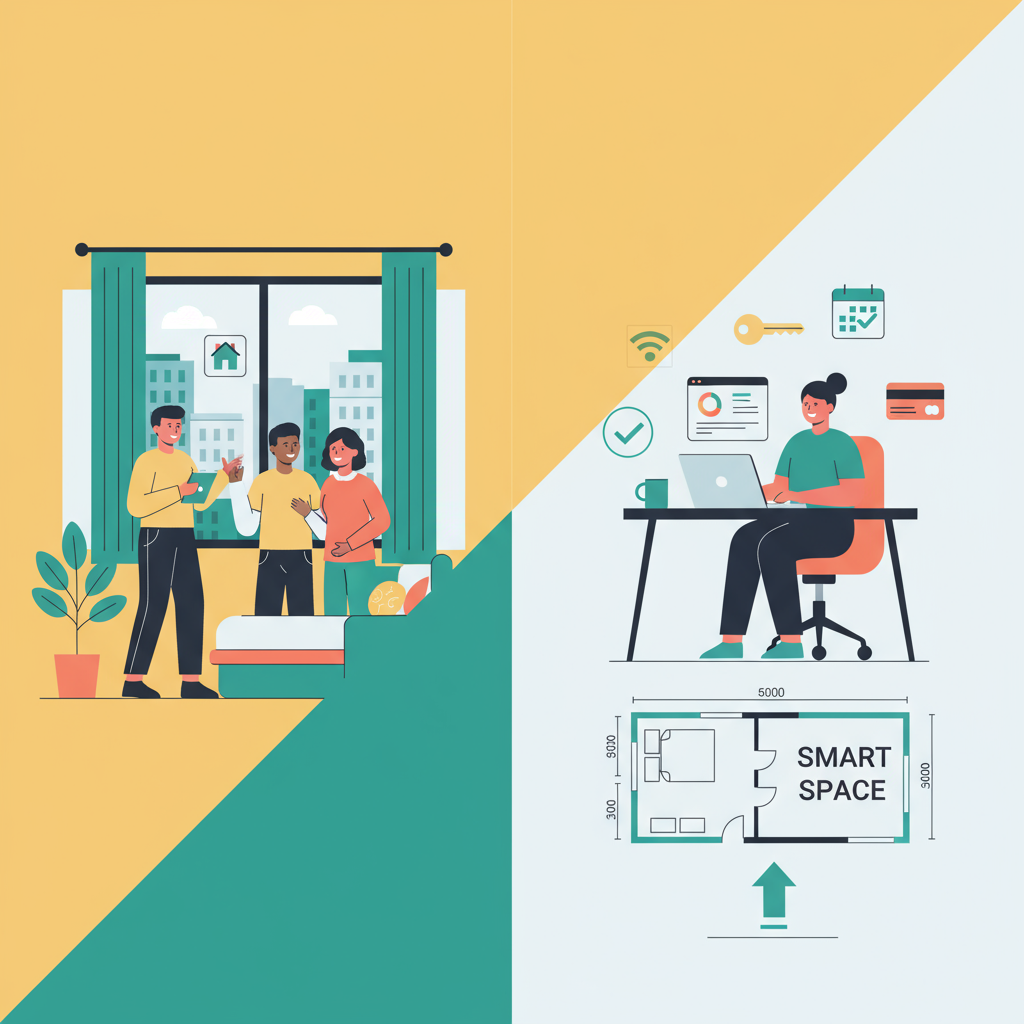

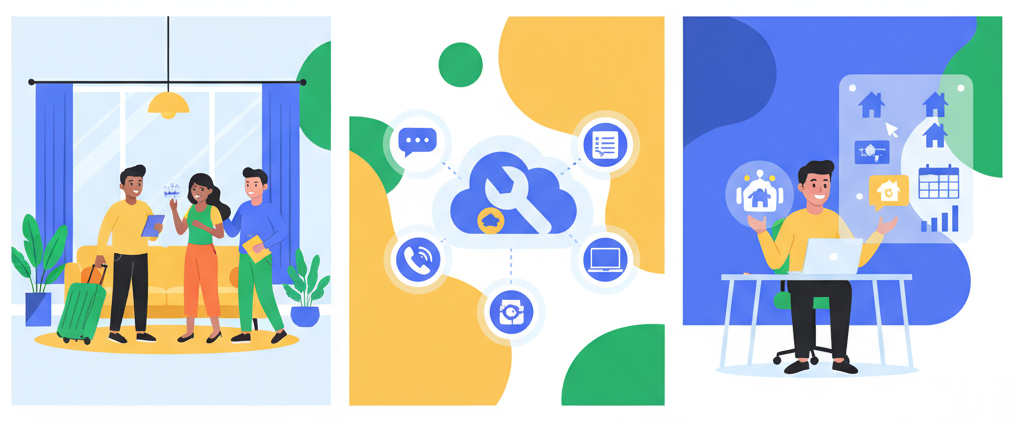
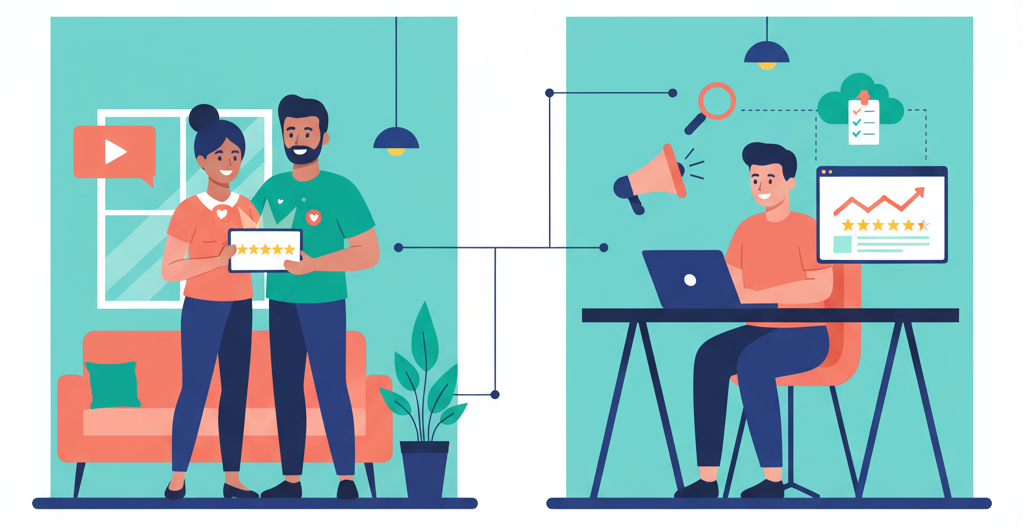





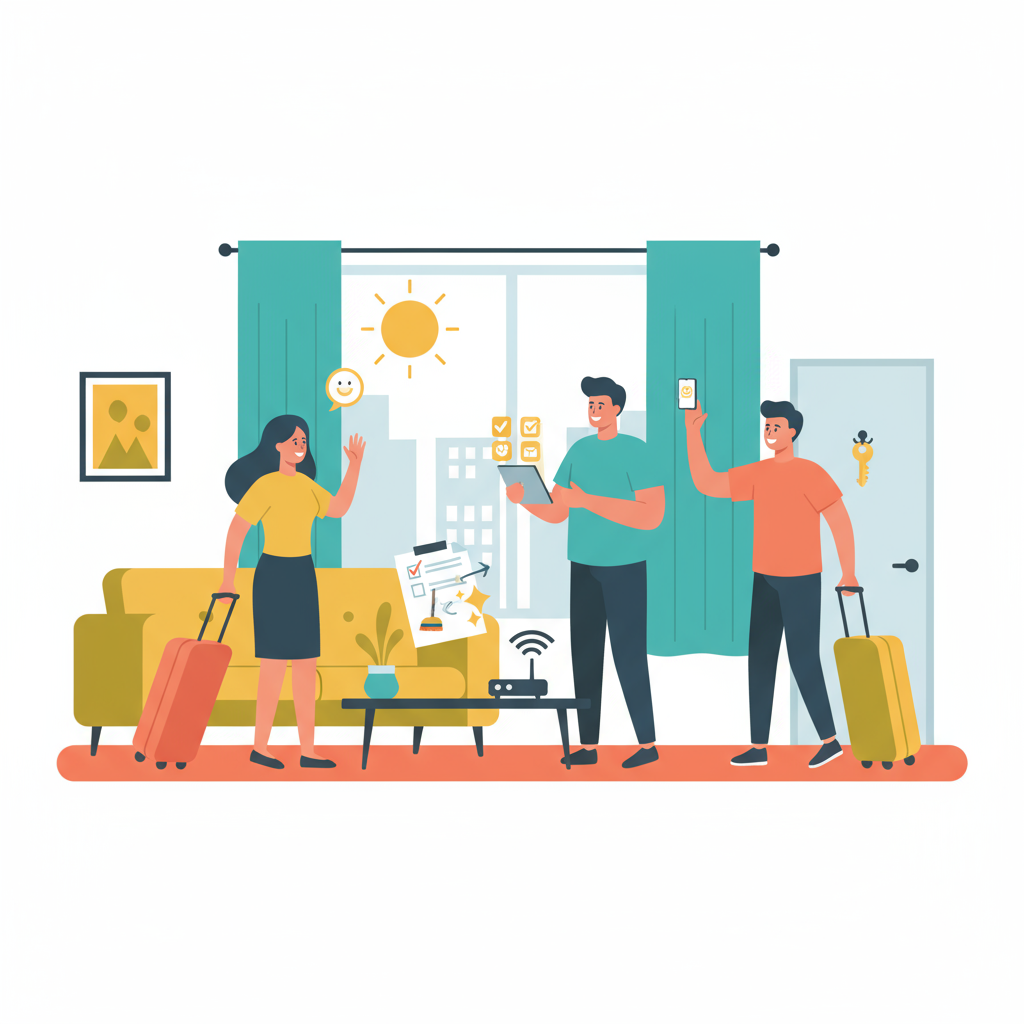
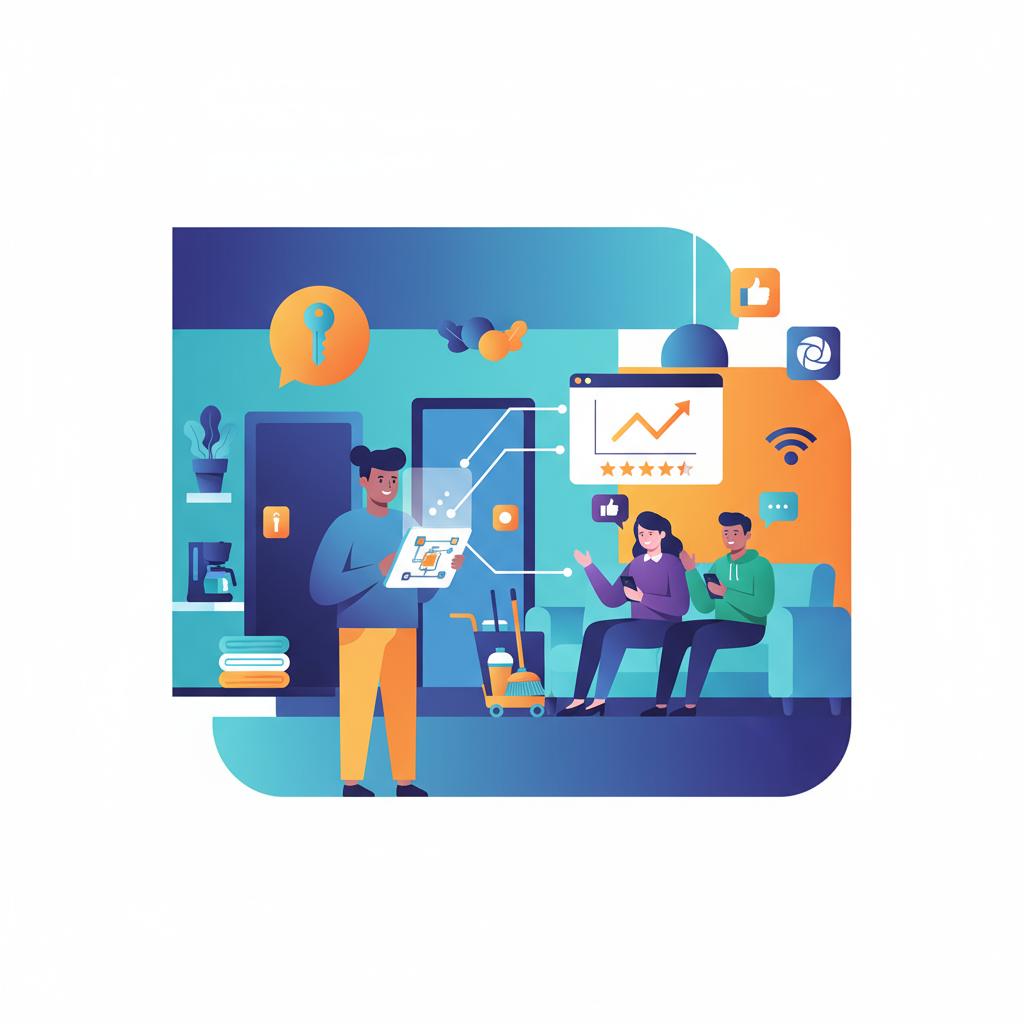


.png)

